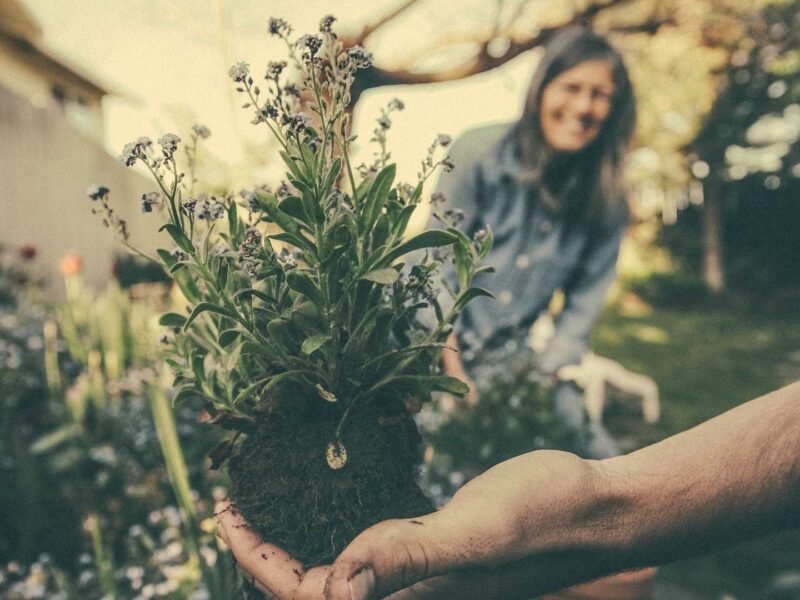When planning any garden design project, plants are usually one of the main attractions. Whatever style of garden you’re going for, there will be certain plants and shrubs associated with it.

For instance, the tropical garden would not be complete without ferns and the English cottage garden must include roses to my mind. You will hopefully have your own ideas but can save yourself time and disappointment by planning for the type of soil you have or taking time to prepare the soil in advance of planting.
Soil types tend to fall into one of 4 categories as well as being either acidic or alkaline.
Clay
This soil is dense and lumpy in texture, with poor drainage it retains moisture during wet periods and sets hard in cold and dry weather. As a result, clay is particularly hard work to cultivate.
Digging in organic matter such as mushroom compost is one of the best ways of improving a clay soil. Adding grit will also help the drainage and make it easier to work with.
Don’t be disheartened though as clay soil retains nutrients and can produce some stunning displays including:
- Digitalis
- Helenium
- Honeysuckle
- Virburnum
- Mahonia
- Buddleja
- Chalky
Generally providing good drainage but poor nutrition for plants, which benefit from added fertilisers, compost or leaf mould. This type of soil is good for alkaline loving plants such as:
- Lilacs
- Lilies
- Azalea
- Hydrangea
- Yew
- Lily of the valley
- Sandy
A grainy, free draining soil which is easy to work with but tends to be low in nutrients because of the rain easily washing through it and the abrasive nature of sand. Adding organic matter will help maintain a nutrient rich soil but there are also plenty of plants which will thrive in this environment such as:
- Tulips
- Geranium
- Broom
- Flox
- Lamb’s Ears
- Juniper
- Lavender
- Silt
Similar to clay but offering better drainage and easier to work with. Despite the good drainage, it also retains a good amount of moisture and is rich in nutrients.
Silty soil can tend to become compacted, which prevents air circulation so it’s important to keep turning over the top few inches regularly.
This will also limit water-logging. Silt allows for a wide range of planting but it’s worth testing the pH level as it could be either acid or alkaline. Some of the plants which favour this kind of soil include:
- New Zealand Flax
- Grasses
- Yellow & Japanese Iris
It’s likely that most of us will have a soil which is a mixture of the types listed above so it’s worth taking a bit of time to find out and to check the pH.
On the whole, there is no reason to limit your planting, as long as you’re prepared to put in a bit of donkey work to begin with by researching and nurturing what you have to work with. If you want an easy life, stick with the plants that naturally thrive in your soil then sit back and enjoy watching them grow.


